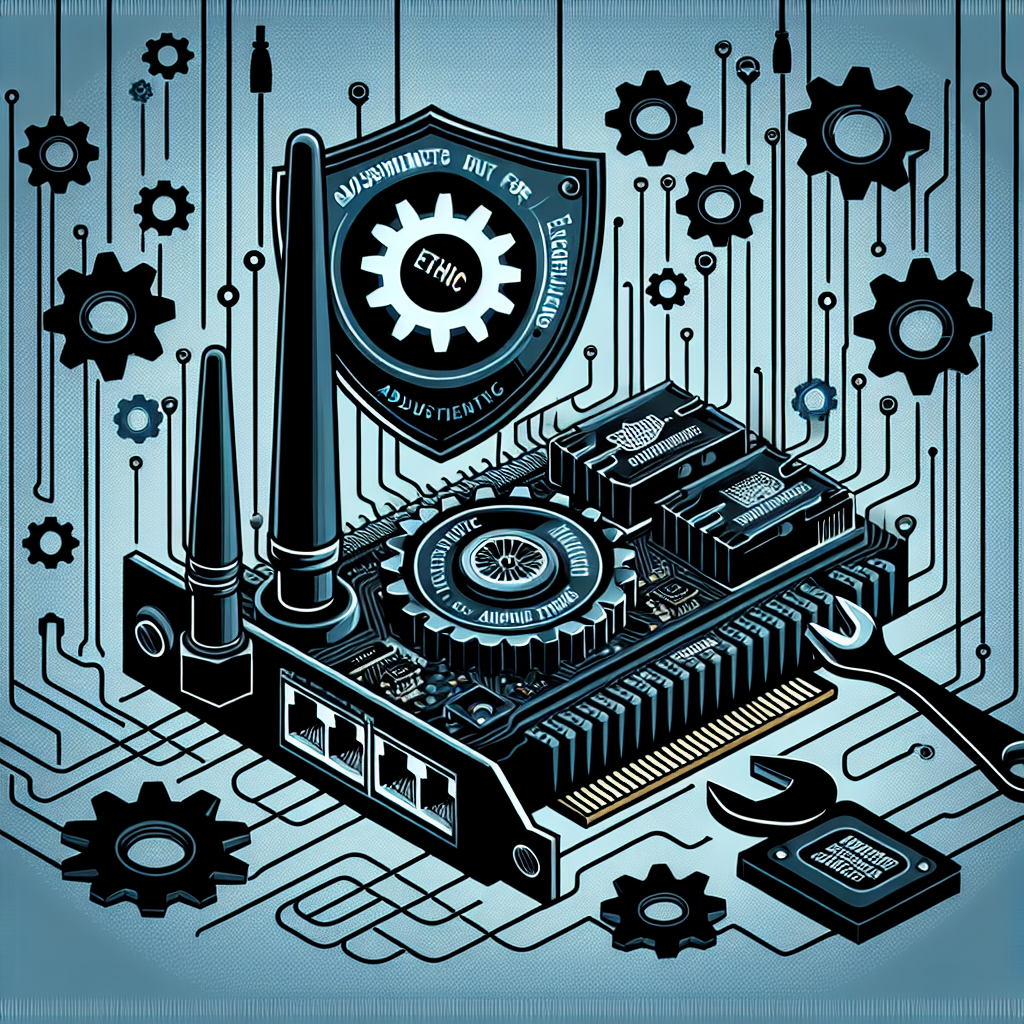
Introduction
In the realm of ethical hacking, optimizing your network adapter is crucial for maximizing network performance and ensuring effective penetration testing. Fine-tuning network adapter settings can enhance data transfer rates, minimize latency, and bolster the overall efficiency of network interactions. This article dives into the essential network adapter settings that should be adjusted to optimize performance for ethical hacking activities.
Table of Contents
- Why Optimizing Network Adapter Settings is Important
- Updating Network Adapter Drivers
- Adjusting Duplex Settings
- Configuring Interrupt Moderation
- Enabling or Disabling Offloading
- Configuring Energy-Efficient Ethernet
- Using Jumbo Frames
- Additional Network Adapter Settings
- Conclusion
Why Optimizing Network Adapter Settings is Important
Network adapter settings play a pivotal role in defining the qualitative and quantitative aspects of an ethical hacker’s performance. Below is a table summarizing different settings and their impacts.
| Setting | Purpose | Impact |
|---|---|---|
| Driver Updates | Keep network drivers up-to-date | Avoids bugs, enhances performance |
| Duplex Settings | Optimal data transfer modes | Maximizes throughput, minimizes collisions |
| Interrupt Moderation | Manage CPU interrupt frequency | Reduces CPU load, potentially increases latency |
| Offloading | Offloads tasks from CPU to NIC | Improves performance, reduces CPU usage |
| Energy-Efficient Ethernet | Manages power usage | Reduces energy consumption but may impact latency |
| Jumbo Frames | Increases frame size | Reduces overhead, improves throughput |
Updating Network Adapter Drivers
One of the most fundamental steps in optimizing a network adapter is ensuring that its drivers are up-to-date. Network adapter drivers facilitate the communication between the network card and the operating system. Outdated drivers can contain bugs, perform inefficiently, or be incompatible with new software. Here are the steps to update network adapter drivers:
- Identify your network adapter: Go to Device Manager and locate the network adapter under ‘Network Adapters’.
- Download the latest driver: Visit the manufacturer’s website to download the latest driver version.
- Install the driver: Follow the instructions to install the new driver and restart your computer if necessary.
Adjusting Duplex Settings
Duplex settings control how data is sent and received over the network. Full-duplex allows simultaneous sending and receiving, while half-duplex requires data to be sent and received one direction at a time. Here are the steps to adjust duplex settings:
- Open Network Connections: Navigate to Control Panel > Network and Sharing Center > Change adapter settings.
- Open Properties: Right-click on your network adapter and select ‘Properties’.
- Configure: Click on ‘Configure’, navigate to the ‘Advanced’ tab, and select ‘Speed & Duplex’.
- Set to Full Duplex: Choose a full-duplex setting best suited to your network speed (e.g., 100 Mbps Full Duplex).
Configuring Interrupt Moderation
Interrupt moderation adjusts how frequently the network adapter interrupts the CPU to process packets. While increasing interrupts can reduce latency, it can also burden the CPU. Reduction in interrupts means higher latency but lower CPU load.
- Access Settings: Go back to the network adapter properties in the ‘Advanced’ tab.
- Find Interrupt Moderation: Look for ‘Interrupt Moderation’ and adjust according to your performance needs. Test different settings to find the optimal balance.
Enabling or Disabling Offloading
Offloading refers to the process of moving certain network tasks from the CPU to the network adapter, thereby freeing up CPU resources. Common types of offloading include TCP Checksum Offloading, and Segmentation Offload. Here is how to manage them:
- Access Offloading Options: In the ‘Advanced’ tab of the adapter’s properties.
- Choose the appropriate setting: Depending on your needs, enable or disable options like ‘TCP Checksum Offload’ and ‘Large Send Offload (LSO)’.
Configuring Energy-Efficient Ethernet
Energy-Efficient Ethernet (EEE) can save power by lowering the power to the network adapter when the network link is idle. While this can reduce energy consumption, it may introduce latency.
- Access Settings: Go to the ‘Advanced’ tab in network adapter properties.
- Set to Off: Some ethical hacking activities benefit from a fixed full power state, so it may be best to disable EEE.
Using Jumbo Frames
Jumbo Frames allow for larger than standard Ethernet frames, which can reduce the number of frames sent and thus reduce overhead. They can be quite beneficial for high-speed networks.
- Access Settings: Go to the ‘Advanced’ tab of your network adapter properties.
- Increase Frame Size: Enable Jumbo Frames and set the desired frame size, typically 9000 bytes.
Additional Network Adapter Settings
Below are some additional settings that can further optimize network adapter performance:
- Receive Side Scaling (RSS): This setting enables the distribution of traffic among multiple processors.
- Receive Buffer and Transmit Buffer: Increasing buffer sizes can sometimes improve performance.
- Flow Control: Helps in managing data flow to prevent packet loss.
Conclusion
Optimizing network adapter settings can significantly enhance the performance and efficiency of your ethical hacking endeavors. From driver updates to advanced settings like Jumbo Frames and Interrupt Moderation, each adjustment plays a pivotal role. Carefully experimenting and tuning these settings can help you achieve the best possible results tailored to your specific needs.
Leave a Reply